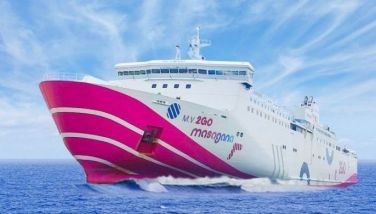YEARENDER: Tourism sector sustains upward trajectory

MANILA, Philippines - The year 2016 is shaping up to be another banner year for the Philippine tourism industry, which has sustained its growth momentum.
In an interview, Tourism Undersecretary for development planning Benito Bengzon said visitors from various key, strategic and opportunity markets continued to flock to the country to enjoy the unique experience the Philippines offers.
Given this, the Department of Tourism expects to hit its six million foreign tourist arrivals target this year. Tourism receipts, on the other hand, are seen to reach $6 billion.
Bengzon said the tourism sector’s contribution to GDP (gross domestic product) is estimated to reach 8.5 percent by the end of the year.
“This will be another banner year for Philippine tourism. As you are all aware, six million would be a record figure for the Philippines in terms of foreign visitor arrivals,” Bengzon said.
Foreign visitor arrivals to the country have already reached 4.46 million as of the end of September this year, just 1.5 million short of this year’s goal.
Employment generated by tourism-related enterprises is seen to reach 4.5 million by the end of the year, bulk of which will come from the transport sector, followed by the accommodations sector.
Bengzon likewise noted the increasing share of tourism activities in emerging destinations in the country.
“We’re seeing a wider distribution of tourism activities around the country. And this is particularly significant because this is aligned with the 10-point agenda of the President, as well as the policy statements of the tourism secretary, which both call for more sustained development in the countryside,” the tourism official said.
He said more foreign tourists are going to Davao, Siargao, Palawan and Iloilo, among others.
Some tourism products and segments have also started to exhibit more potential for growth in the past year, Bengzon noted.
For one, he said diving enthusiasts all over the world are starting to appreciate the Philippines as a choice marine dive spot.
Just recently, the DOT assisted in organizing two major diving events in the country. These include the Diving and Resort Travel Expo Philippines 2016 held last September, as well as the fourth Anilao Underwater Photo Competition Festival.
This year’s DRT expo saw more exhibitors and delegates, proving the growing interest in the Philippines as a premiere diving destination, Bengzon said.
He added foreign divers have also expressed their fascination for the Philippines’ marine resources and diving spots during the DOT’s participation in other diving expos worldwide.
“You can see that we’re making a lot of headway and people are starting to take a closer look at the Philippines as a diving destination,” the undersecretary said.
Cruise tourism
Another segment that has exhibited immense potential in the past year is cruise tourism. The DOT has completed its National Cruise Tourism Development Strategy due to the growing demand for cruise calls in different parts of the country.
Bengzon described the completion of the roadmap as one of the major accomplishments of the DOT this 2016.
The master plan, according to Bengzon, identifies the Turquoise Triangle, which includes Manila, Boracay, Northern Palawan and Subic as some priority areas for cruise development.
He said the private sector’s interest to invest in cruise port infrastructure, as well as the demand of passengers to visit different tourist spots in the country reflect the growth potential of this particular segment.
Identifying cruise tourism as a priority area for growth, the DOT has intensified its presence in various online platforms, such as Seatrade Cruise.
“This is one area where we feel we have been successful with – marketing and promoting the Philippines as a cruise destination,” the tourism official said.
As of the end of October this year, a total of 19 cruise ships, carrying 24,712 passengers had already made calls to the Philippines.
Accessibility
Accessibility is a key element for any tourism destination. It is one of the government’s thrusts to make sure destinations, particularly in the rural areas, get as much access to roads and transport facilities as possible.
According to Bengzon, the DOT’s convergence program with the Department of Public Works and Highways and the Department of Transportation continued to reap benefits in the past year.
The DOT-DPWH Tourism Road Infrastructure Program, for one, developed 235 infrastructure projects with a total allocation of about P22.48 billion. The purpose of the program is to make tourist destinations more accessible to visitors through the construction of roads and bridges.
From 2013 to 2016, the government has finished close to 3,000 kilometers of roads leading to the different tourism hot spots around the country.
Bengzon likewise cited the opening of the Ninoy Aquino International Airport Expressway, which cut the travel time to and from the various terminals of the gateway.
This also connected the airport to the bay area, particularly the 100-hectare Entertainment City in Parañaque City, an emerging tourist destination known for its world class integrated resorts.
In terms of air connectivity, data acquired from the DOT showed seven international airlines opened eight new direct flights to and from Manila and various secondary gateways.
These included Xiamen Airlines, which mounted three Xiamen-Cebu flights a week starting March, Emirates with its Dubai-Cebu-Clark flights, and China Eastern Airlines’ Chengu-Cebu and Chengdu-Manila flights, among others.
Some foreign airlines have also increased the frequency of their direct flights, such as Silk Air, who launched three additional Singapore-Davao flights this year.
Meanwhile, local carriers Philippine Airlines, Cebu Pacific and Air Asia collectively opened 13 new international routes.
The direct flights mounted by both foreign and local carriers contributed a total of 888,056 additional seat capacity per year.
Bengzon said there has been an evident increase in the number of flights and passengers using secondary gateways as points of entries in recent years.
Bulk of foreign passengers or approximately 75 percent still enters through NAIA. About 15 percent goes through Cebu, while the rest enter through other international gateways, such as Clark and Caticlan.
“This is part of our thrust to disperse tourism activities,” Bengzon said.
“This will also mean that the infrastructure agencies would have to step up the development of our airports because the arrival experience that one has in a major gateway like Manila and Cebu is the same experience one will look for in secondary destinations, at least as far as the facilitating the entry and service standards are concerned,” he added.
Investments
Another landmark for the DOT and its attached agency, the Tourism Infrastructure and Enterprise Zone Authority (TIEZA), is the grant of incentives for tourism enterprise zones (TEZ).
“This is good news because now we can finally go full blast with our tourism investment promotions and tell the world we are open for business,” Bengzon said.
He said the DOT and TIEZA are now pushing for an intensified tourism investment promotion by conducting more road shows in different markets.
The year also saw more tourism investments following President Rodrigo Duterte’s state visit to China and Japan.
Tourism stakeholders from these countries have signified their interest to expand to the Philippines and bring in more of their travelers to the country.
A lot of these investments went to the accommodations and airline business.
For one, Japanese low-cost carrier Vanilla Air agreed to introduce the Tokyo-Cebu route, while charter operators from China have started to mount more flights to Laoag and Cebu.
Prospects for 2017
Bengzon said 2017 is looking “very positive” for the tourism sector as many tourism related infrastructure are set to open.
“A lot of the infrastructure projects will be completed by 2017 and 2018, including the (expansion of) Mactan-Cebu International Airport, as well as the (opening of) airports in Puerto Princesa and Panglao,” he said.
The DOT just recently completed the draft of its National Tourism Development Plan (NTDP) for 2016 to 2022, which will set the sector’s direction in the remaining years of the current administration.
The master plan is expected to be finalized in the first quarter of 2017 which the DOT seeks to align with the National Economic and Development Authority’s Philippine Development Plan and AmBisyon Natin 2040.
- Latest
- Trending





























